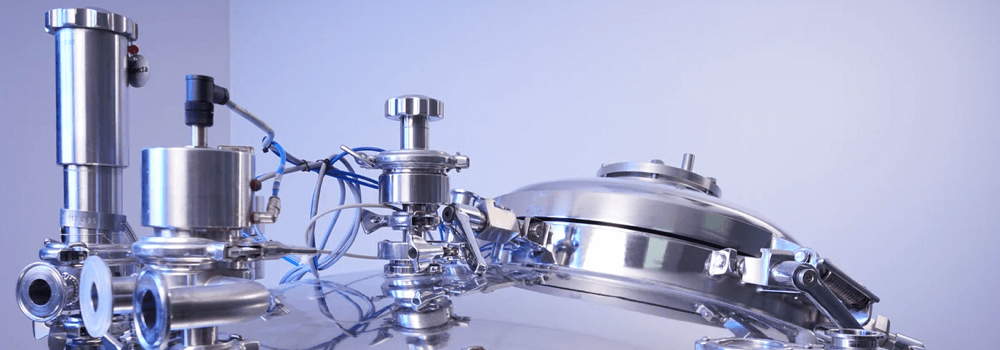
Low Shear Applications
Some components of pharmaceuticals, such as proteins, cells, or final fill solutions, are especially sensitive to shear stress. When mixing such products, it is a delicate balance between mixing enough to ensure homogeneity of the mixture but gently to protect the shear-sensitive product from damage.
As these products are being purified and concentrated their value and shear sensitivity increase.
Protein chains that are exposed to too much shear will break and form agglomerate, which can be indicated through clogged filters or failing product quality.
Ensuring compliance of the mixing operation and best product recovery are key factors for success.
To facilitate this, we developed a fully levitating bearing-less technology with a high-efficiency design that allows the shear-sensitive product to mix homogeneously without the risk of being damaged.

Emulsification And High Shear Applications
Emulsification of non-soluble liquids is a challenge by default. Doing this in a pharmaceutical production environment requires vessel design and mixing system appropriately optimized for this particular purpose. An example of such application could be water and oil-based emulsion products used for creating an oil film for tablet coating. High shear is also used to quickly get rid of “lumps”, “fisheyes” or simply implement particle size reduction.
Often are the two applications performed by utilizing a rotor/stator design and with high energy input.

General Mixing Applications
In a pharmaceutical plant, many mixing applications are more general, yet still critical from an aseptic and performance point of view. These applications can be anything from heat transfer, keeping suspensions homogeneous, or liquid to liquid mixing. Ensuring mass heat and gas transfer is of importance as well as the ability to create scalability of mixing performance as vessel volumes change in the different process steps and applications. Efficiency in mixing performance is driven by optimizing the vessel design, mixer location, mixer design, and operation with the desired application. Essential to achieving good performance is the efficiency of the mixer design itself, promoting fast mixing times increasing the efficiency of the facility, or reducing the risk of shear impact by running the mixer at reduced speed creating gentle but adequate mixing.
General mixing applications like these require a multi versatile mixer that can address several different needs.

Powder and Vigorous Applications
The biggest challenge working with powders – is working with powders.
Some powders are low density and have a hydrophobic character, which leads them to float on top of the liquid in the vessel. Other powders are high density and still have a hydrophobic character, which leads them to sink into the liquid in the form of large lumps, not being wet.
In some applications, a powerful vortex is needed that pulls down the powder to the mixer in the bottom, which allows for a homogeneous mixture.
When aiming to achieve a vortex, it is very important to consider the vessel design and its geometrics, the position of the mixer, and mixer output. If a vessel is wrongly designed, it may be impossible to create a vortex inside.

Chemical Applications
“EMA Engineering always provides cost effective, good quality engineered solutions.” For further information regarding product and services please contact with us.
Error: Contact form not found.
